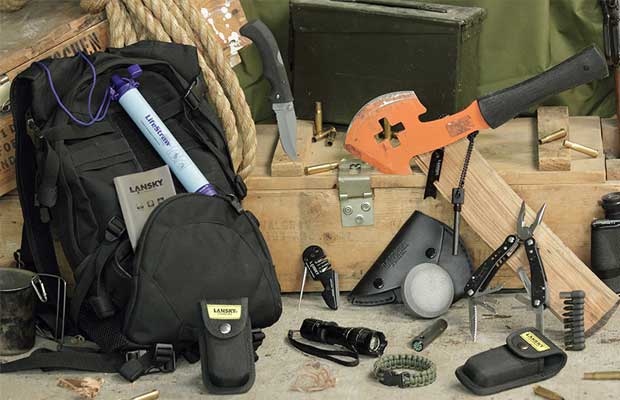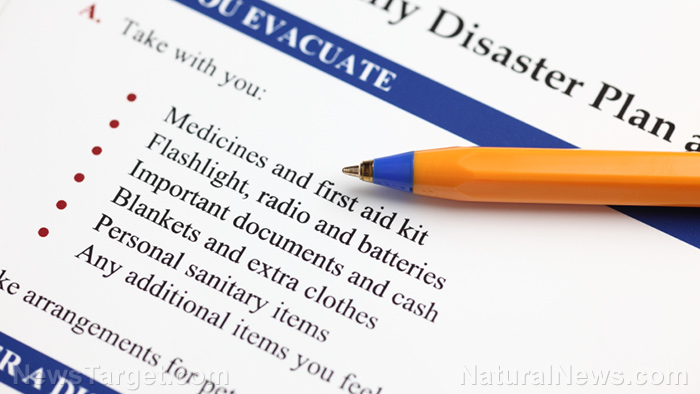Food storage tips: How much food and water do you need to survive for 3 months?
09/29/2019 / By Zoey Sky

Food storage is an important aspect of prepping. When SHTF, your life will be much easier if you have at least three months’ worth of shelf-stable food in your survival stockpile. (h/t to AskAPrepper.com)
But what if you’re on a budget, and you want to store the bare minimum food supply to keep your family well-fed during a long-term disaster scenario?
Following a “bare minimum diet” is also ideal if you need to store only the essentials at a bug-out location with limited storage space. (Related: Food storage tips: Considerations for making the most out of your food prepping budget.)
Even when SHTF, you need to follow a diet that includes food rich in essential vitamins and minerals you need to stay healthy.
Energy
Your body needs energy for various processes. At least two-thirds of the calories from the food you eat helps maintain your body temperature.
If your energy gets dangerously low, your body will prioritize finding an energy source. Without enough energy, your body will start breaking down stored fat, muscle tissue, or internal organs for energy conversion. The average adult male needs a minimum of 1,500 calories a day, while women require 1,200 calories.
Consuming the bare minimum of food will prevent malnutrition for a couple of months.
Fat
Not all fat is bad, and you need a certain amount of fat in your diet. Since the body can’t produce them naturally, you must eat food rich in fatty acids.
Get at least 25 to 30 percent of your total calories from fat, which is about 375 to 450 calories per day for men and 300 to 360 calories per day for women. Ensure that only a third of this comes from saturated fats.
Fiber
Dietary fiber lowers LDL (low-density lipoprotein) cholesterol levels, prevents constipation, and stabilizes your blood glucose (blood sugar).
Men need an ounce and a half of fiber while women need at least one ounce of fiber per day.
Protein
Protein lets your body repair and maintain itself. This macronutrient is also needed to manufacture enzymes and hormones.
Your body uses the protein in food to produce the more complex proteins it requires. A diet low in protein can make you feel tired and weak, reduce muscle bulk, and prolong wound healing.
To maintain your overall health, you should get 20 percent your total calories from protein. However, for the bare minimum diet, men need at least 300 calories from protein per day while women need about 240 calories.
It is best to consume a gram of protein per day for every two pounds of your weight. For example, if you weigh 150 pounds, you’ll need to eat about 75 grams (three ounces) of protein-rich food.
Sodium
Sodium, like fat, must be consumed in moderation. You only need at least half a gram of sodium per day or about a gram of salt.
Vitamins and minerals
Vitamin and mineral deficiencies have many adverse side effects.
- Iron deficiency causes anemia, a blood disorder that results in fatigue and weakness.
- Thiamine/vitamin B1 deficiency may result in confusion, fatigue, short-term memory loss, and weight loss.
- Vitamin A deficiency can affect your eye health and function, along with your reproductive health.
- Vitamin D deficiency will negatively affect your bone growth.
Take a daily multivitamin tablet to ensure that you get all the nutrients you need.
Planning your diet
Stock up on staples that can be paired with other food in your stockpile, fruits or vegetables from your garden, or fish and animals that you hunt.
The bare minimum diet includes three prepper staples: beans, pasta, and rice. These items are affordable, and they’re good energy sources of energy and protein.
Since beans are your best source of protein for this diet, your daily meal will include a mix of beans and rice. Eating these two foods provides a complete protein or all the amino acids the body needs.
Your second meal will have a pasta base. But since pasta is bland and doesn’t have enough protein, you will add canned tuna in oil. Use the tuna oil to add extra calories and more omega-6 fatty acids from the fish.
Daily meals for the bare minimum diet
For this diet, you will eat two meals daily. Serve them for breakfast or lunch, or eat during lunch and dinner if you need the energy to get through the afternoon.
The main meal contains four ounces of rice, two ounces of beans, and two tablespoons of oil. The second meal has four ounces of pasta and a tablespoon of oil. Get the oil for both meals from the canned tuna.
Water
You also need enough water for drinking, food prep, and cleaning. Stocking up on water prevents dehydration during a long-term SHTF event.
You’ll need at least one gallon a day per person. If you have extra space in your storeroom, store two gallons per person.
Water has a definite shelf life. Rotate your water supply or slow the growth of contaminants in water by adding several drops of bleach per gallon.
If the water in your stockpile is tainted, purify it via boiling, chemical treatment, or filtering.
Before you stock up for a bare minimum diet, talk to your family. Help them understand that preparing for a disaster involves a bit of sacrifice on their part and that following this basic survival diet gives them the nutrients they need to stay alive and healthy for at least three months.
Sources include:
Tagged Under: calories, canned food, disaster, emergency food, fat, fiber, food collapse, food safety, Food storage, food supply, homesteading, minerals, off grid, patriot, preparedness, prepper, prepping, protein, SHTF, sodium, starvation, survival, survival food, vitamins
RECENT NEWS & ARTICLES
COPYRIGHT © 2017 DISASTER NEWS

















